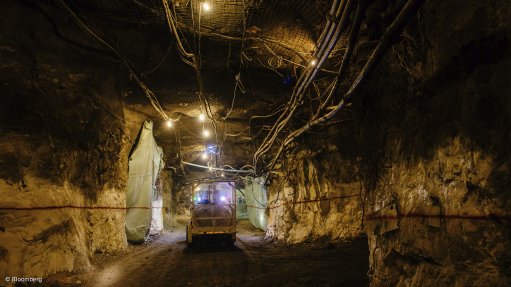
Photo by: Bloomberg
Licence to operate and disruption are two of the biggest risks facing mining companies in Africa, a research report by EY, titled ‘Top risks and opportunities facing miners in Africa 2020’, has found.
“Social responsibility and stakeholder needs are intensifying, as are the needs for digital transformation, innovation and managed risk,” says EY Africa team leader Wickus Botha.
In South Africa, EY has identifies the main risk for miners as licence to operate, which includes the operating environment for miners.
Botha notes that miners operating in the country are faced with rising cash costs as labour unions pursue wage increases and engage in strike action if these are not made.
“This, coupled with commodity price volatility, [results in] an operating environment that could lead to tight cashflow or even suspended operations,” he explains.
South Africa remains uncompetitive in terms of the ready supply of skilled labour, with higher labour costs than other sub-Saharan African countries. Poor economic performance and strict labour market relations have been a structural barrier to employment in the country.
Botha suggests that it is necessary to counteract labour challenges, maintain strong communication channels and transparency, and pre-empt issues that are likely to lead to strikes.
“While legislation on minimum wage of workers will further increase labour costs for miners, companies can tie-up with universities and institutes to invest in developing the right skills for youth for the future,” he points out.
Further, Botha says South Africa’s economic value is being eroded as a result of declining gold production, the high cost of production, diminishing ore grades and a strict regulatory environment.
“Allocation of capital to mining has been challenged by relatively lower returns on equity compared with other sectors and asset classes, with gold miner Sibanye-Stillwater, for example, freezing new South Africa capital spend on uncertainty in the country.
“Higher extraction costs from lower-grade mineral deposits and from increasing complexity of operations, is making many mines uneconomic,” Botha notes.
He warns that South African miners are at risk of finding it even harder to access capital markets if shareholder returns do not match competing projects in other countries.
Meanwhile, Botha states that contributing factors to the decline in gold productivity in South Africa is falling grades, the increasing depth of operations and ageing infrastructure.
“South African miners have not widely increased productivity using technology for fear of losing employment to automation. Digital effectiveness faces major resistance from the labour-intensive mining industry, which accounts for 450 000 direct jobs.”
“However, digitally enabled productivity could fundamentally change operating models to become more profitable and remain a going concern. This should be an urgent priority in South Africa.”